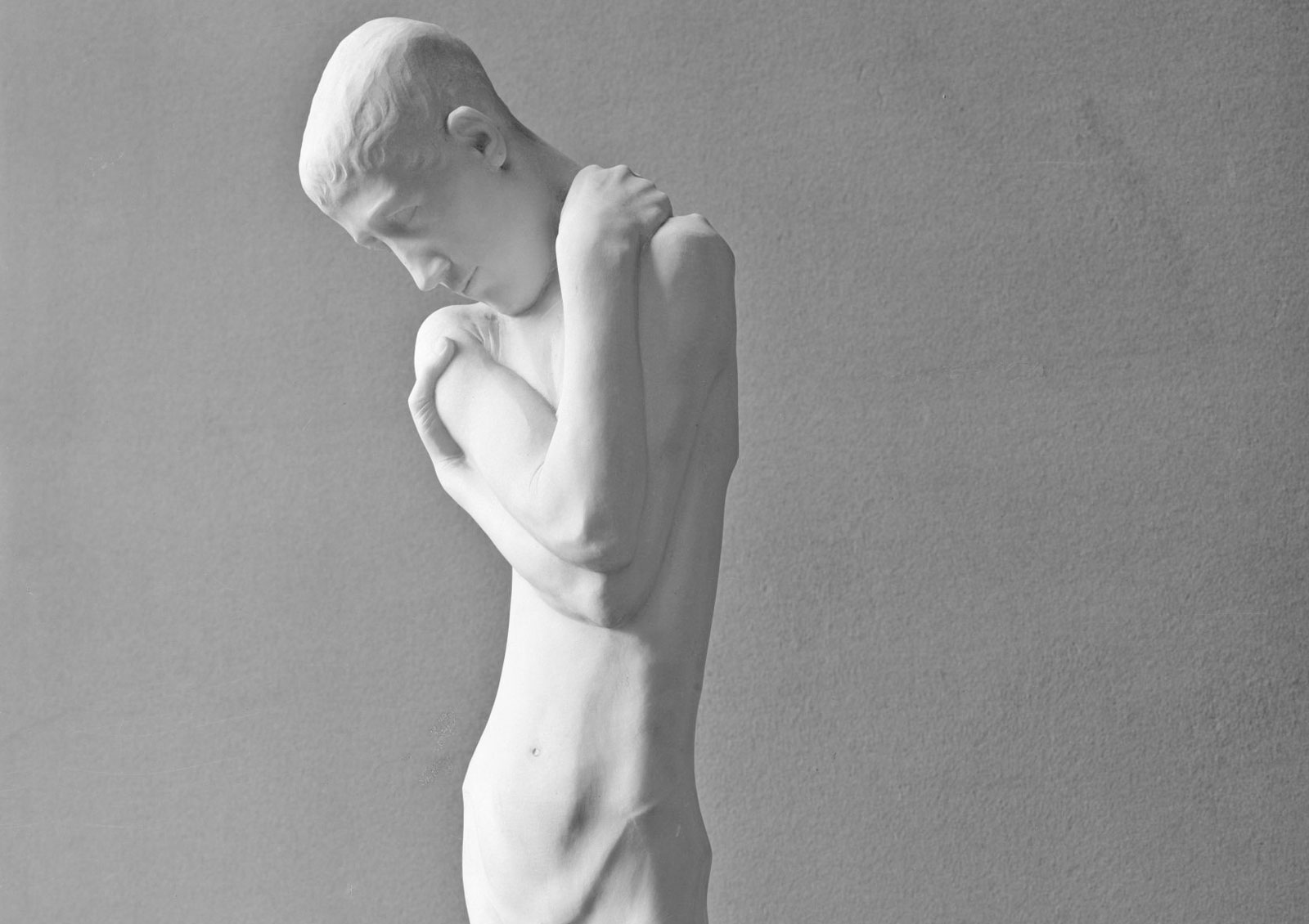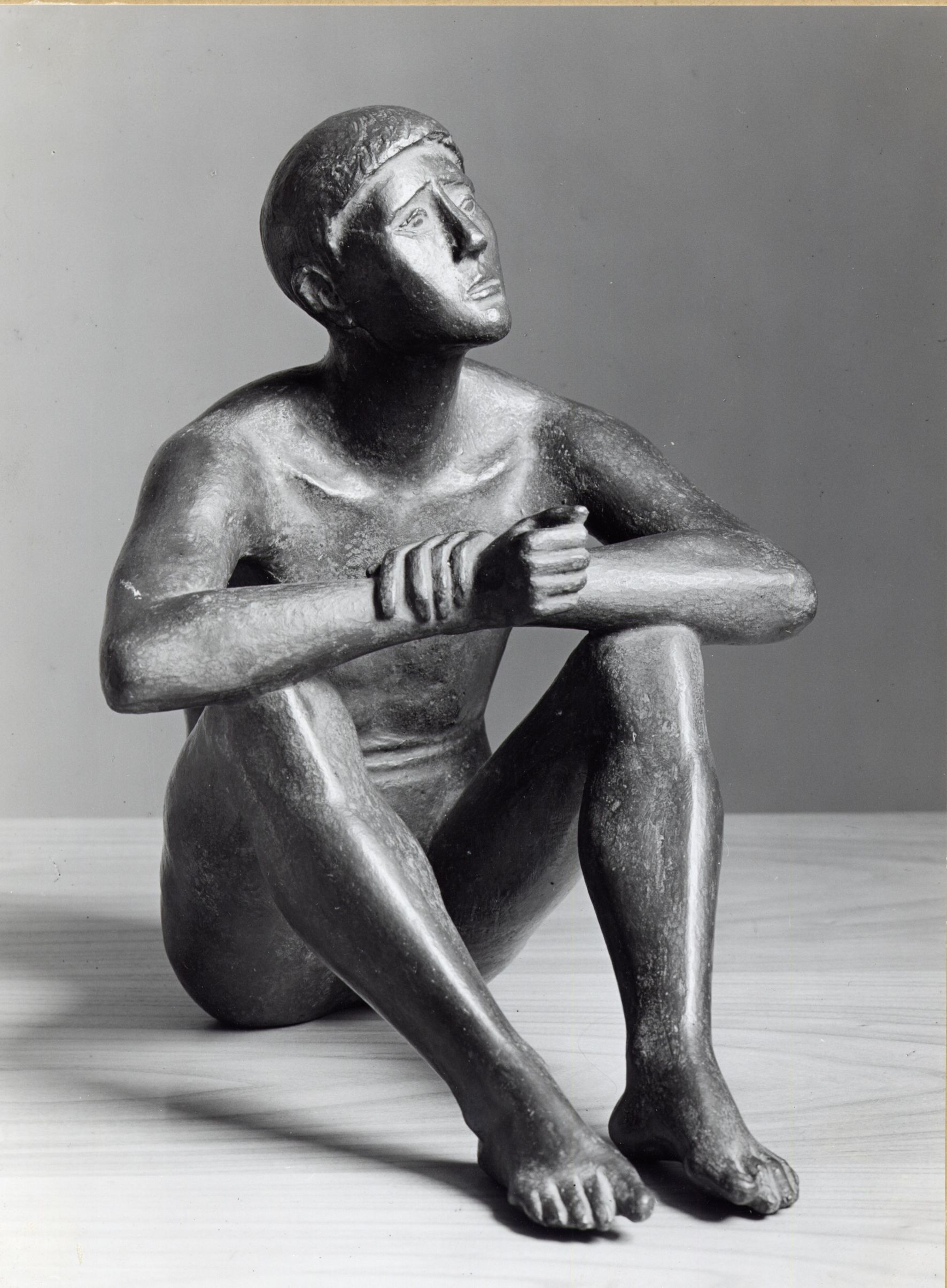
Sensitive men – in modern sculpture
The Edwin Scharff Museum dedicates this exhibition to the topic of the sensitive men in modern sculpture by presenting around 60 sculptures by Adolf von Hildebrand, George Minne, Hermann Blumenthal, Georg Kolbe, Gerhard Marcks and many other artists.
Since the turn of the 19th and 20th centuries, sculptors have been working in strikingly large numbers on the topos of the intact but vulnerable young man. The conception of a sensitive male body ideal appears as a conscious countermovement to the heroically strong male images of the time. Their demonstrative weakness stands in internal contradiction to the brutality of external reality. In an environment of warlike-militant self-confidence of the late imperial period and still young democracy movements, the predominantly male artists sought to refine body and mind. The cult of youth, which flourished in both militant and pacifist circles in the period around 1900, inspired this ideal of the sensitive and tender man. In the literary figures of Thomas Mann, Rainer Maria Rilke and Georg Trakl or in the circle around Stefan George, numerous parallels can be found in literature to these unusually gentle images of men.

Already in the late 18th century, the classical period brought a return to antiquity and the sculpture of the Renaissance. Depictions of Cupid, Narcissus, Pygmalion or Ganymede as delicate youthful figures enjoyed great popularity in public and especially in private sculpture collections. Modern sculpture, however, broke away from such narrative contexts and offered more openly than ever before human bodies, which are permeated by a tender inner and outer emotion. The tender men of Hildebrand, Minne and many of their contemporary artists insist on their sensitivity, on a subtlety that does not shy away from defencelessness, on pausing and listening within instead of external self-expression.

Lehmbruck’s “Gestürzter” („Fallen man“) of 1915 /16 marks a turning point in the body concept of modern sculpture in many respects ̶ but also in its attitude to the circumstances of the time in whose context it must be seen. According to this, in view of the circumstances of the time, the beautifully lined depiction of the unharmed body appears at least remote from the world, if not anachronistic or reactionary. With works by Hermann Blumenthal, Joachim Karsch, Gerhard Marcks, and Renée Sintenis, however, a newer sculpture has emerged that thinks about the vulnerable, sometimes internally and externally fragile, in its gentle body conceptions. Particularly impressive here are the examples from the time of the Second World War, when the demanded world order finally no longer provided room for the hesitant, the dithering and the doubters.
The exhibition conceived by the Georg Kolbe Museum comprises works by sculptors from three generations. The images of men conveyed in them stand party in contrast to external reality and its canonised historiography. At the same time they show the diversity of modern gender roles, which are the expression of a history of emancipation that is still relevant today.
The exhibition catalogue (in German) is available in the museum shop or by mail to esm@neu-ulm.de.
Header image: George Minne, Kniender/Kneeling man, 1906, Städtisches Karl Ernst Osthaus Museum, Hagen. Foto Bildarchiv Foto Marburg